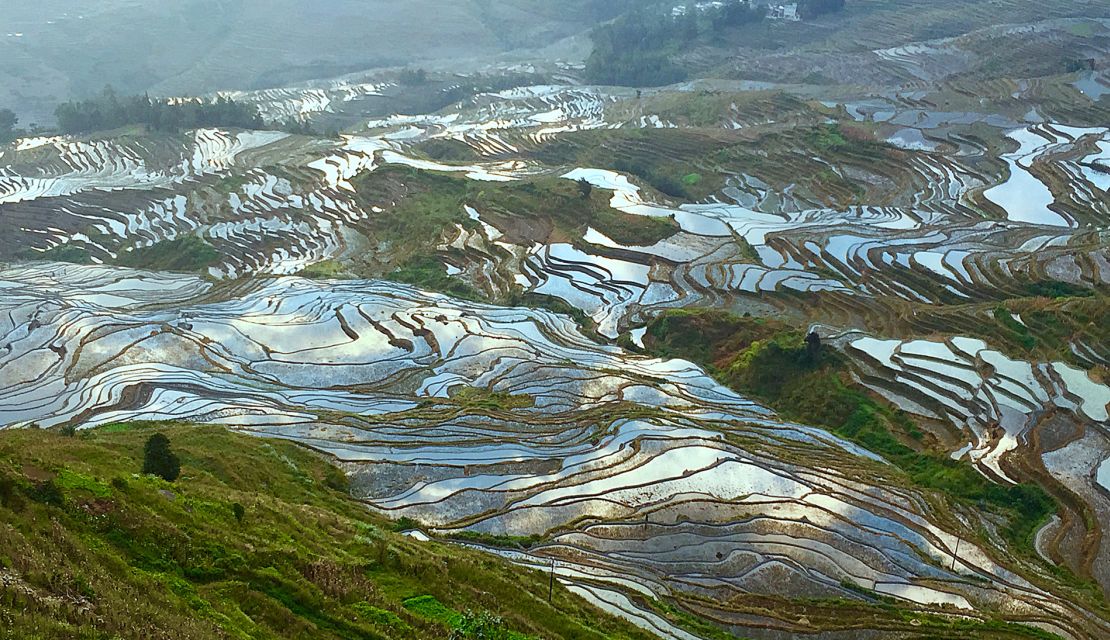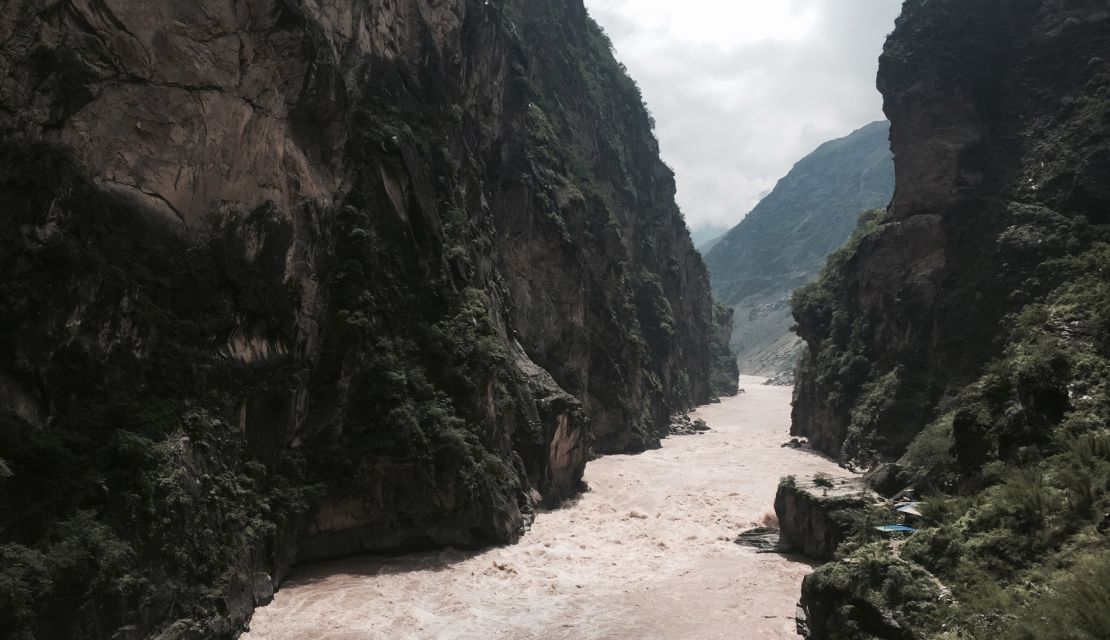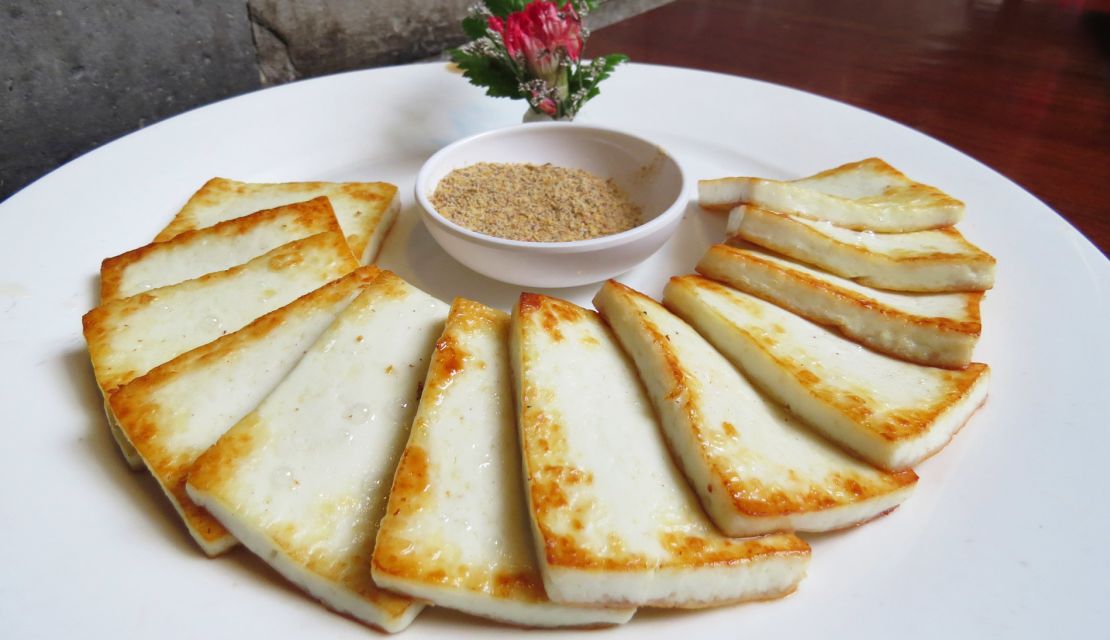If there’s a downside to Yunnan travel, it’s that one trip simply isn’t going to be enough.
This province in southwest China is its most ethnically diverse. It’s home to 25 of the country’s 56 recognized ethnic groups. And each has a unique culture and cuisine. Then there’s dramatic landscape and breathtaking views that are rumored to have inspired the Shangri-la of James Milton’s “Lost Horizon.”
Here are nine highlights of Yunnan province:
1. Hani rice terraces

When the Hani ethnic group built the rice paddy terraces in Yuanyang County more than 1,300 years ago, little did they realize the irrigation system would become such a hit among sightseers.
The terraces cover 166 square kilometers in southeast Yunnan. When the sun rises and sets, its light reflects off the pools of water, creating spectacular views and colors that change almost every minute as the sun moves.
There are three main viewing areas that require admission, but locals can point out free viewing spots that are no less stunning.
2. Rice noodles
One of Yunnan’s most popular dishes is guoqiaomixian (translated as crossing-the-bridge rice noodles). Legend says the dish was created by a woman who needed a soup that didn’t become soggy as she carried it across a bridge to the island where her husband was studying.
So now the delicious piping hot chicken broth is served with ingredients, including vegetables, fish meat, herbs, spices and rice noodles, on the side. Everything is combined just before serving.
3. Lijiang’s Old Town
A fascinating and sometimes confusing maze of cobblestone streets lined with souvenir shops, cafes, restaurants, bars and guesthouses make up Lijiang’s Old Town.
Though most of the truly ancient buildings are long gone, new structures honoring the town’s 1,000 years of heritage still have an old-world charm.
UNESCO inscribed Old Town as a World Heritage Cultural Site in 1997, saying it “represents the harmonious fusion of different cultural traditions to produce an urban landscape of outstanding quality.”
At night, the bar street is a rowdy party destination. Indie musicians playing original works and Chinese and Western covers can be found in smaller bars.
4. The bluest water ever?
The highest peak of Jade Dragon Snow Mountain is said to have been summited just once. Maybe because it’s a tough climb, maybe because of the time-sucking scenery on the way up.
More than 5,500 meters, this lofty destination has mystical significance for the local Naxi ethnic minority. On a clear day the majestic mountain can be seen from Lijiang. A cable car up from the base of the mountain gives breathtaking panoramic views of the valley below.
Blue Moon Valley, halfway up the mountain, has some of the bluest water known to humans. There are four lakes in the valley, all different shades of blue. The valley has become a popular destination for Chinese couples taking pre-wedding photos.
5. Tiger Leaping Gorge

Named a UNESCO World Heritage natural site in 2003, Tiger Leaping Gorge is one of the world’s deepest canyons. It’s where whitewaters of the mighty Yangtze River roar beneath cliffs that tower up to 3,790 meters high.
Hardcore hikers can choose two- or three-day treks along the upper path, taking their time to soak in views of the sky, mountains and rapids. Daylong minihikes down the canyon or along the river bank are also an option. There are plenty of rest stops on way, including a few cheap guesthouses with restaurants.
6. Stir fried insects
Many markets in Chinese cities serve insect skewers but Yunnan boasts a unique range of edible insects known as a “Yunnan insect banquet.” Specialties are bamboo grubs, silk worms, cicadas and dragonflies. Once the ick factor has passed, they’re a pleasant combination of crunchy, sweet and salty.
7. Fried cheese

Yes, there’s fried cheese in China – and it’s amazing. Unlike soft or crumbly Western goats cheeses, Yunnan’s version is firm. It’s sometimes eaten with Xuanwei ham – another regional specialty.
8. Barbecue, Yunnan style
Because of its location just over the border from Vietnam, Myanmar and Laos, Yunnan cuisine uses spices and herbs more reminiscent of Southeast Asia.
Typical dishes include meat, fish and mushrooms wrapped in pandan or banana leaves, infused with chilies and garlic and then barbecued to perfection. They’re then served with a side of sweet and spicy fish sauce.
Chicken wings are stuffed with sticky rice and grilled. And no barbecue is complete without lamb and beef skewers.
A few of these and a bottle of beer makes a delicious dinner at any night market.
9. Relaxing in Xishuangbanna
The palm tree-lined streets of Xishuangbanna’s capital Jinghong feel more like Thailand than mainland China.
Xishuangbanna is an autonomous prefecture, sitting in the south of Yunnan near the border with Laos. Even in December, daytime temperatures climb to nearly 30 C. The region is home to the Dai ethnic minority, which makes up about 30% of Yunnan’s population.
Buddhist temples, the Mengla Tropical Rain Forest and ethnic minority parks are some of the places to visit. There’s also a pedestrian path that stretches for kilometers along the bank of the Mekong River.
Getting there and around
Trips to the Tiger Leaping Gorge and Jade Dragon Snow Mountain can be booked through guesthouses or the many travel agency booths spread throughout Lijiang Old Town. Most tours are in Chinese.
Alternatively, private minivans seating up to six people, can be flagged down in the road or hired in front Lijiang’s main bus station.
The China Highlights website offers good tips on hiking the gorge.
Any group tour to Jade Dragon Snow Mountain will include a stop at the Blue Moon Valley and the cable car trip up to the mountain. Alternatively tickets can be purchased separately from the main visitor center at the base of the mountain.

















